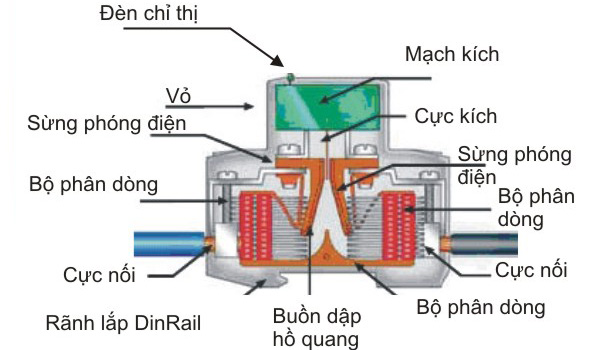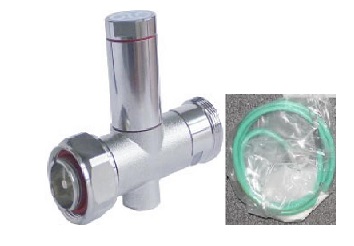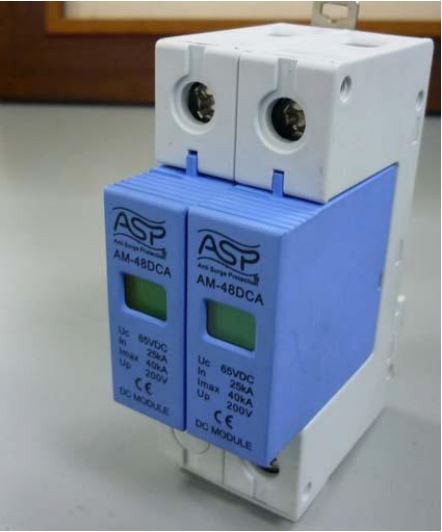The knowledge of Surge Arresters that not everyone knows
Surge Arresters are the products which are indispensable for every Telecom Projects; their effect is anti-lightening and protecting devices from burning, being damaged due to sudden voltage changes. Is that enough for the effectiveness of Surge Arresters? Surge Arresters are more effective than you think and the below article will help you to understand more detail about this kind of product.
Surge Arresters are designed for protecting sensitive electronic devices from being damaged by surge overvoltage, lightening impulse and RF interference phenomena.
The products are designed with 3 protection levels inside the devices as the following:
- The primary protective layer
- Low-pass filters with coils.
- LC capacitor and the secondary protection.
Surge Arresters has the capability of absorbing surge overvoltage impulse or lightening impulse at normal mode (phase / neutral), landscape mode (neutral / ground) from two directions: The direction from the input source and the direction from the loading head, adaptive equipment installed on power supply of 3-phase and 1-phase.

Principles of propagation Surge Resistance on the AC Power Source at 2 main levels: Primary Surge Arrester and Secondary Surge Arrester. The secondary Surge Arrester with smart technology in serial mounting before loading, no power consumption, the devices using smart technology have response time < 1ns and have some types of products: - 1-phase: 10A, 20A, 32A, 40A, 63A, 125A-3-phase: 20A, 32A, 40A, 63A, 125A, 200A, 315A, 450A ... 1250A.

Surge Arresters are serially mounted before loading and depend on using loading lines, can be installed at any points on the system of low voltage power distribution: At the main power distribution cabinet of the building or distribution cabinet of electrical allowances for sensitive electronic equipment and structural details are as follows:
- The first protective layer: The first protective layer of Surge Arresters uses the technology of MOV, SAD, GDT which is capability of withstanding the flows of lightning impulse from 40KA, 70kA or 100kA connected between the phase wires / neutral to absorb surge overvoltage impulses or lightening impulses at normal mode (phase / neutral), these surge overvoltage impulses are often generated by the switching switch and the impulse noise on the power system.
- The second protective layer of Surge Arresters includes coils (L) and capacitors (C). This LC system of low-pass filter has a duty to make voltage impulses which were cut in the first layer weaker.

Moreover, this filter layer also decreases background noise with the frequency of around 800Hz going into the system of electrical distribution.
The third protective layer of Surge Arresters is capable of withstanding the lightening lines of 25KA, 40KA or 70KA, is connected behind LC Filter, the structure is the same as the elements in the first layer. The duty of the this third layer is not only decreasing left voltage impulses in the second layer that are cut and filtered above but also decreasing overvoltage impulses generated after loading due to switching or restarting electrical devices, leading to have an impact on other electrical devices.
Other news
- Tìm hiểu về cấu tạo sợi cáp quang và phân loại cáp
- Extreme Announces First Integrated Solution Following Avaya Acquisition
- The design and the applications of twisted –pair cables
- Tìm hiểu về bảng đồng tiếp địa chống sét
- Characteristics and the usage of resin cable ties in the telecommunications industry
- Types of Fiber Optic Patch Cord
- Khuyến Nghị Sử Dụng Máy Đo Ethernet – EXFO ETS-1000 / ETS-1000L
- Khuyến Nghị Sử Dụng Máy Đo Phân Tích Phổ - Anritsu MS2711E
- The differences between Optical Fibers and Coaxial Cables
- Electric Cables – Square Power Cables - Kingsignal | T.A.T Telecommunications
.png)













